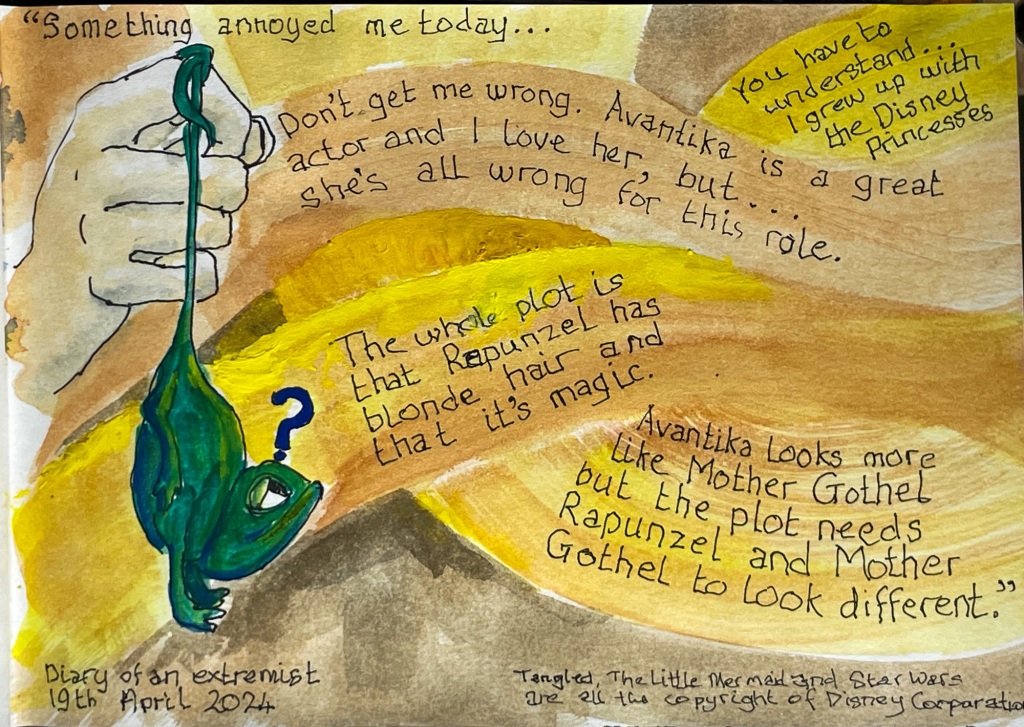Here are posters and banners photographed at the Nakba Day March in London on Saturday 18th May. They are not mine and I do not necessarily endorse every sentiment. But these are heartfelt and impassioned. Please read and reflect.
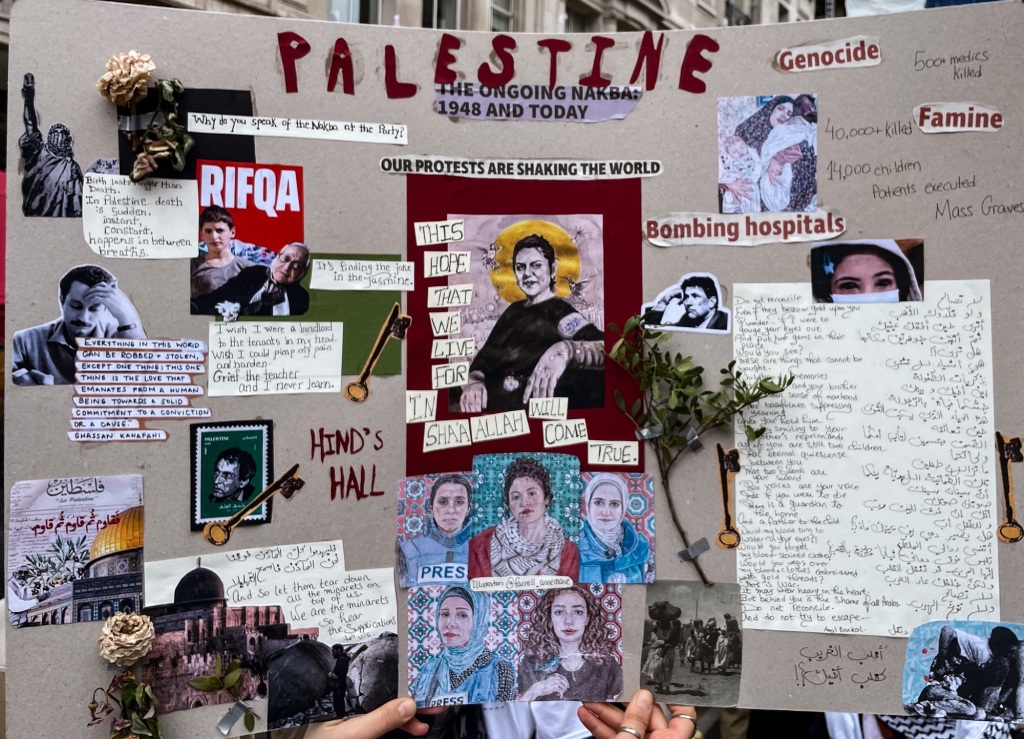
A detailed poster carried through London.
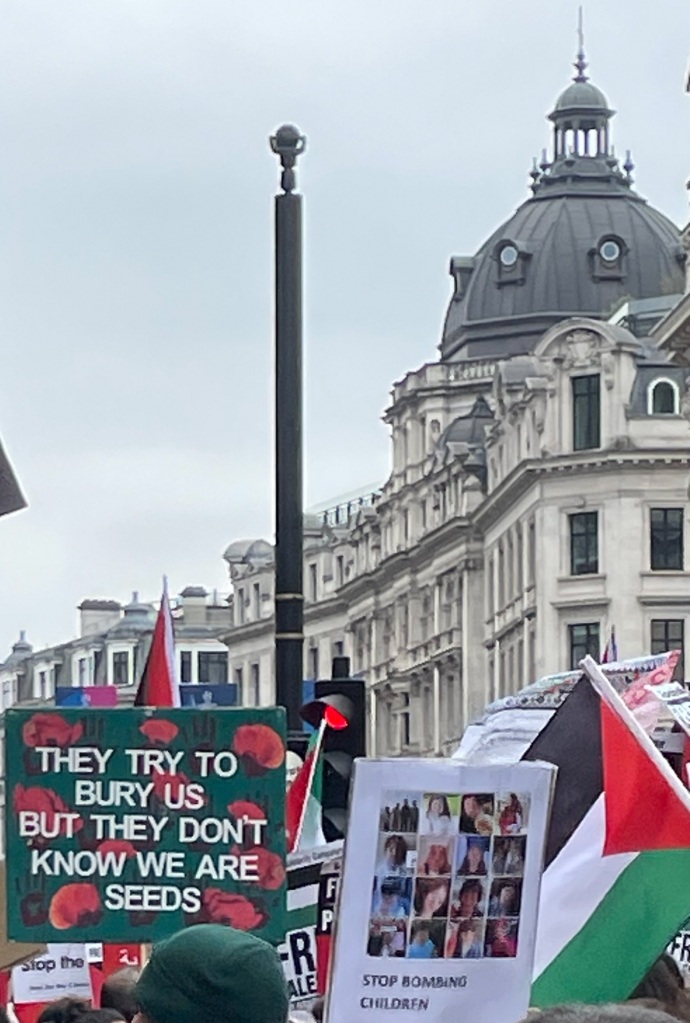
So many homemade, heartfelt posters and banners.

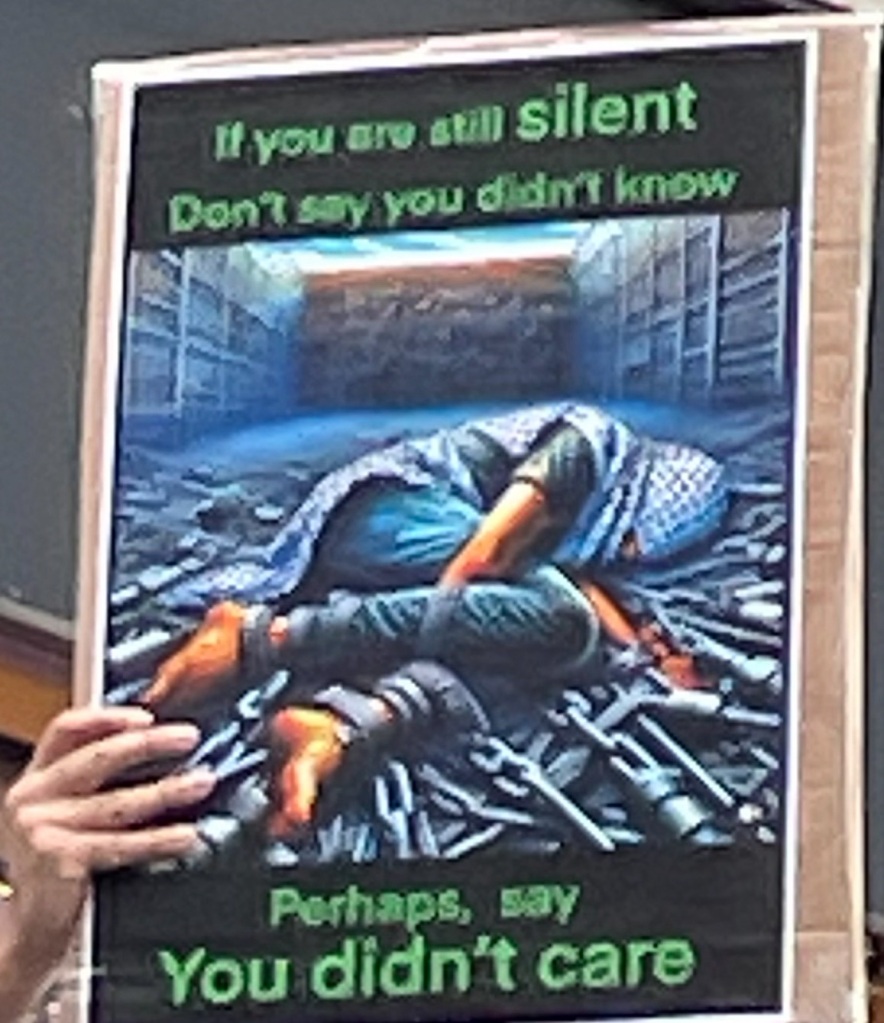
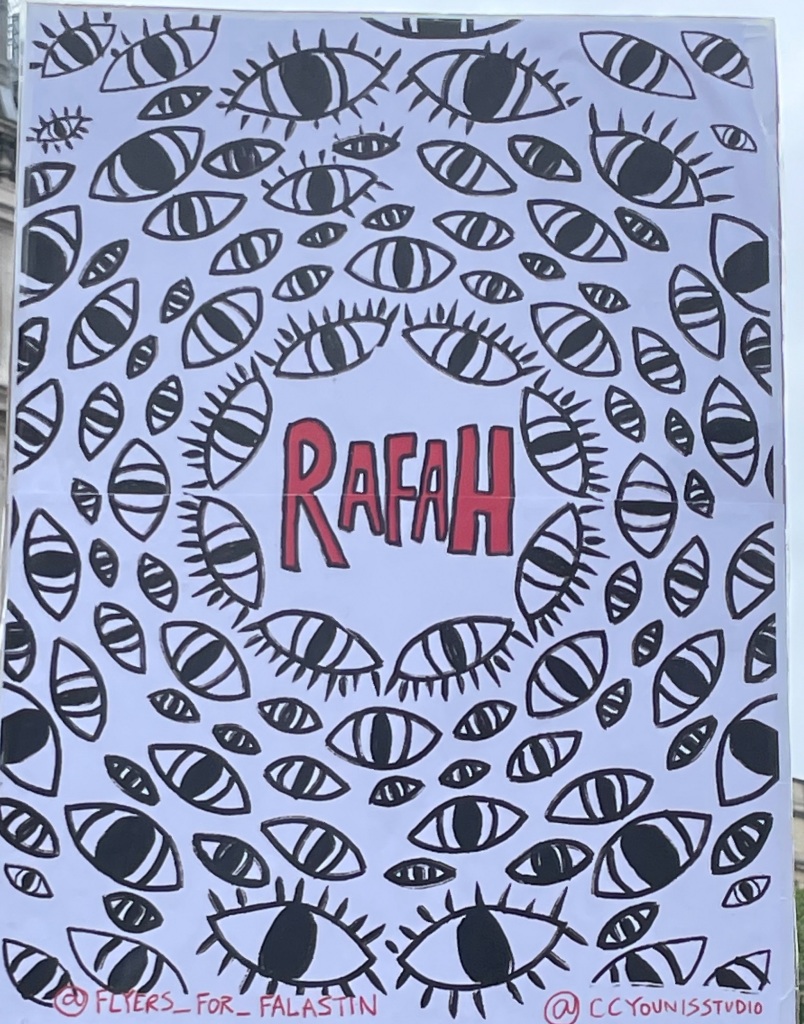
All eyes on Rafah. The last refuge. The one everyone was sent to as a safe area. The one access point for aid. Now invaded, bombed, a killing field.


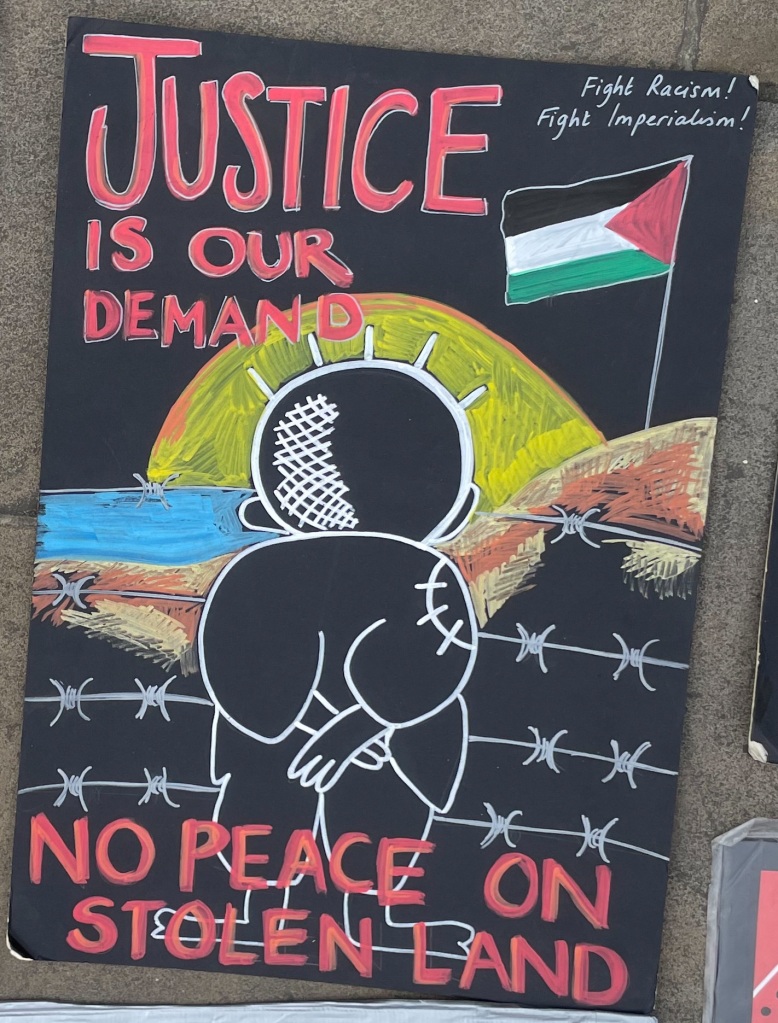
This poster features Handala, a cartoon figure created in 1969 by political cartoonist Naji al-Ali that has become an iconic symbol of Palestinian identity and defiance, “portraying war, resistance, and the Palestinian identity”
Safe behind defensive walls, an occupier knows no peace in their heart. An unjust peace contrasts with liberation, which is for everyone.
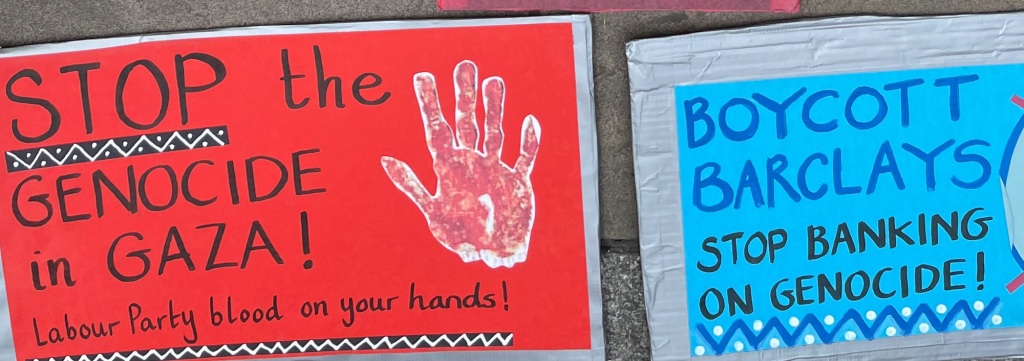
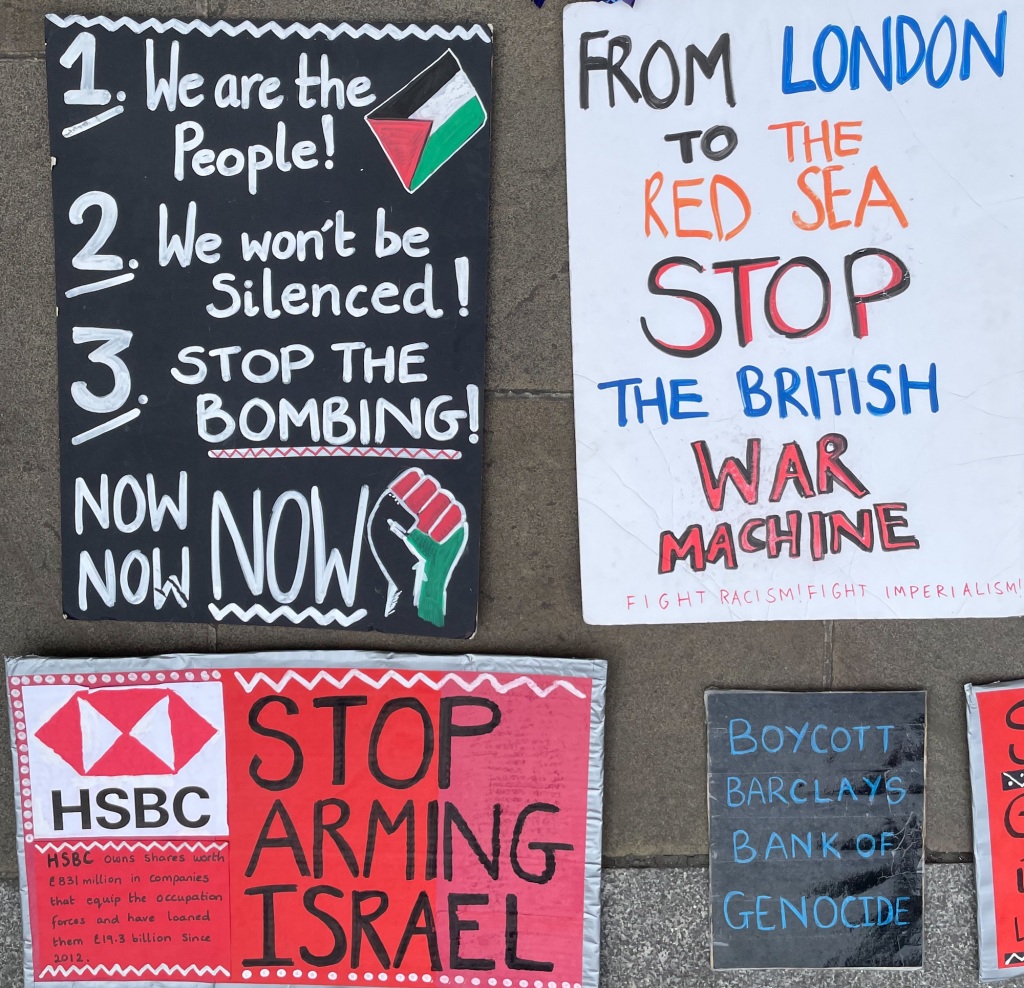

Gosh, the anger is palpable at the Labour Party’s leadership, which has failed to challenge genocide. Labour isn’t even in government, yet. Will this influence the general election I wonder?

Ask yourself … why the key as a symbol of Nakba Day?
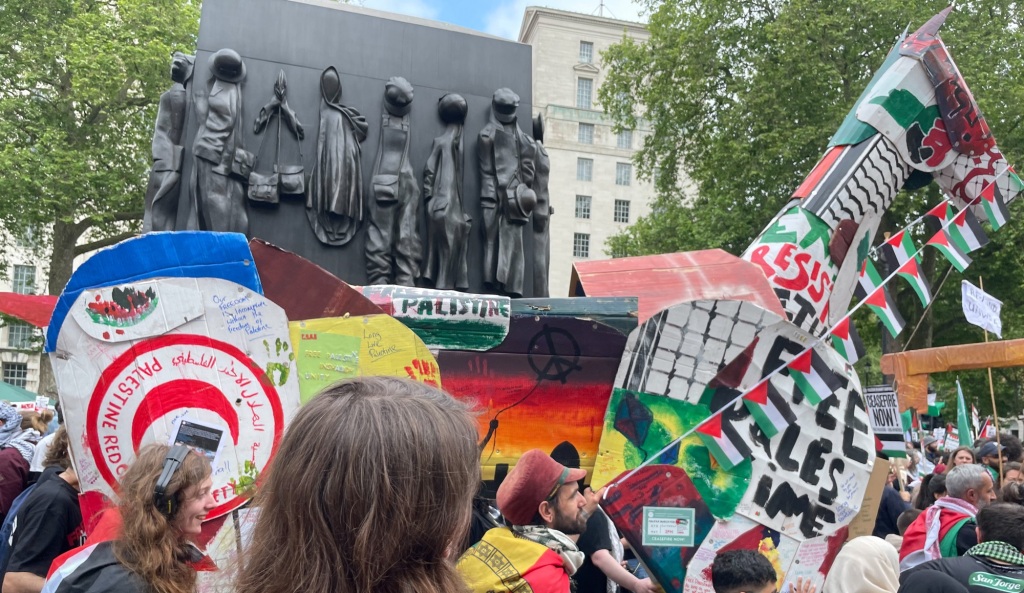
I couldn’t work out the symbolism of the horse.

A change in mood here. At the side of the March route, pleas for liberation from oppression in Iran.

More than 100 press and journalists killed in Gaza since this escalation of the occupation began in October. This guy is present at each protest, cosplaying as press, his flag a tribute and memorial to those who would open our eyes.
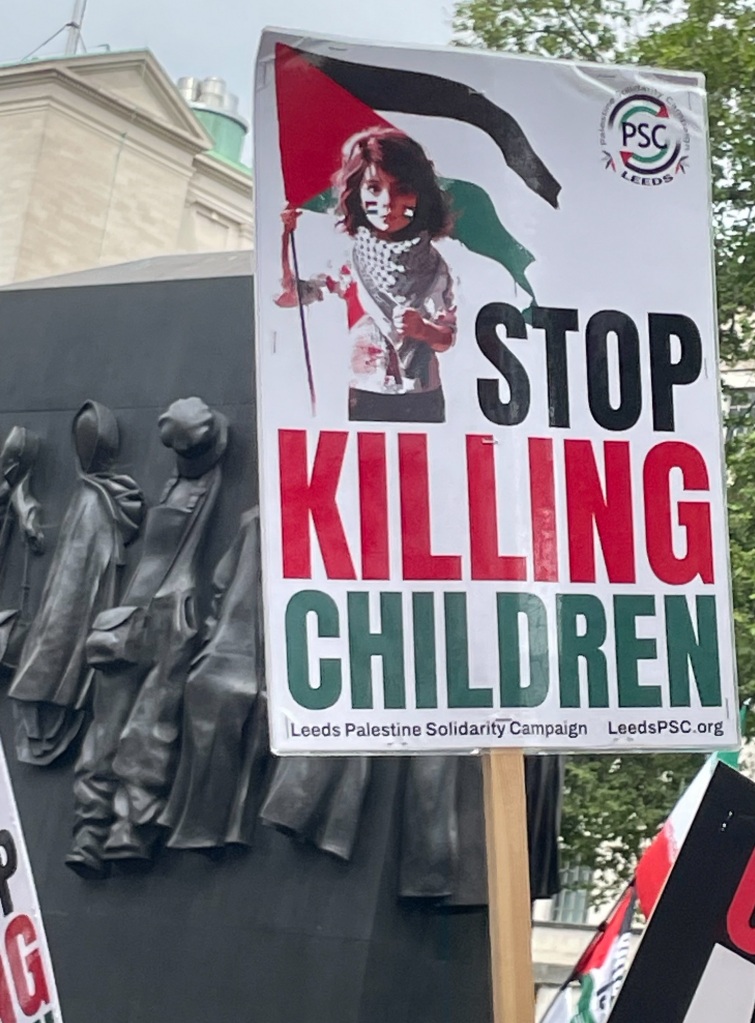
A simple and clear demand. Behind is the UK war memorial dedicated to women on the home front.
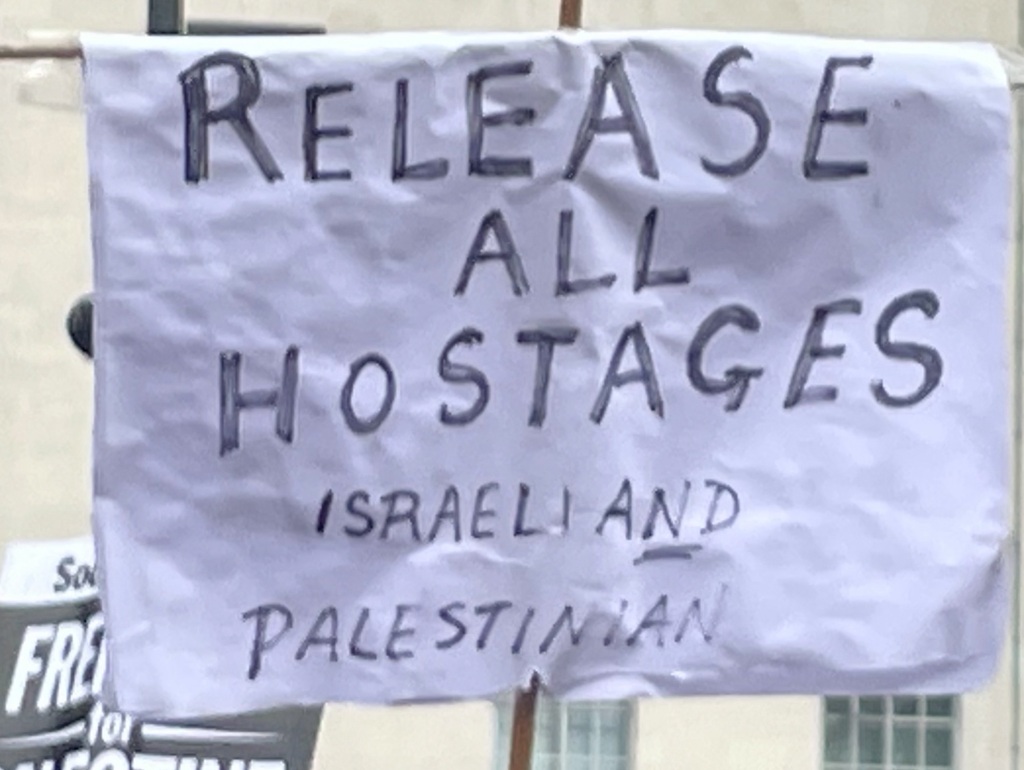
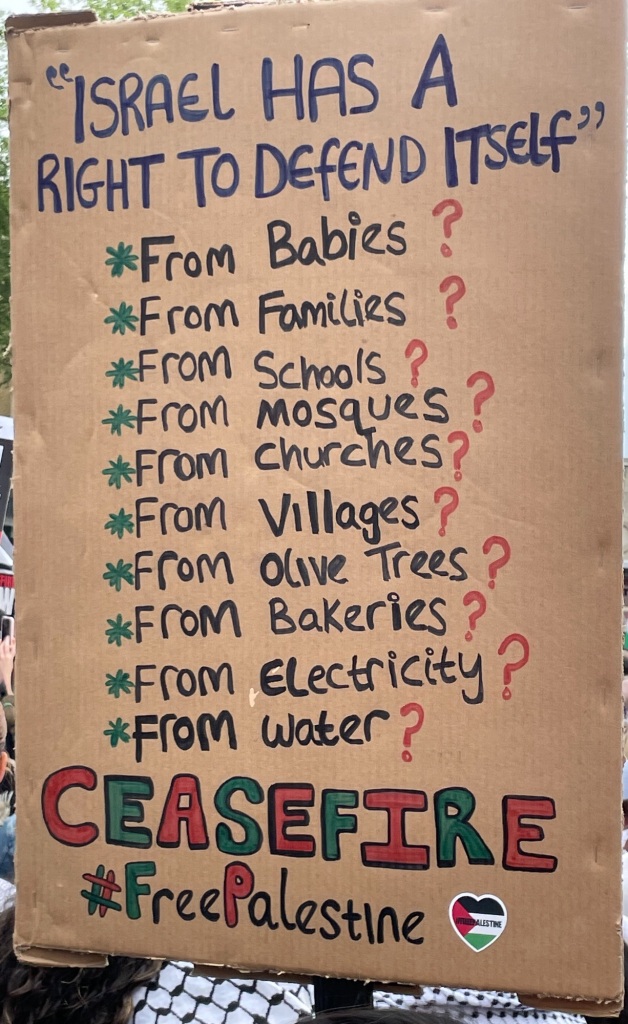
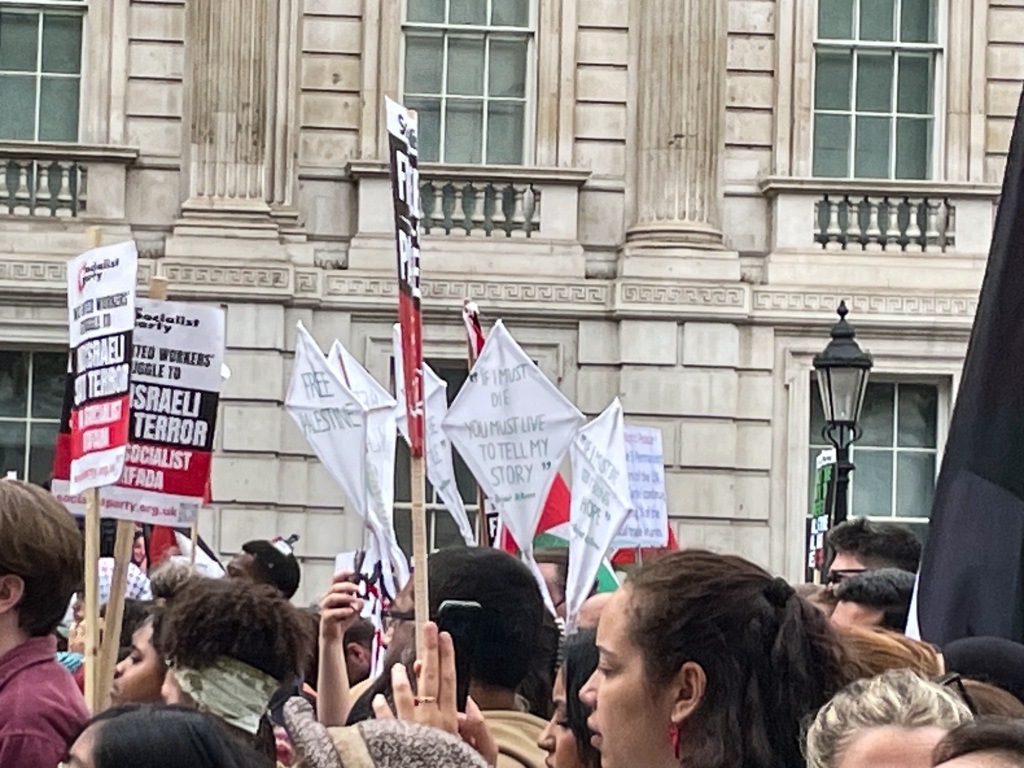
Flying kites is a pastime in Gaza and a potent symbol of freedom.
The words on the kite say “If I must die, you must live to tell my story” the first lines of a poem by the late Refaat Alareer, professor of world literature and creative writing. He was murdered by occupation forces on 6th December 2023. He had written the poem for his eldest daughter, Shaimaa. On 26 April 2024, five months after Alareer’s death, Shaimaa, her husband Mohammed Siyam, and their newborn baby were killed by an airstrike on their home in Gaza City.

After the Nakba, the catastrophe, people still hold the keys to their ancestral homes from which they were driven out three generations ago.
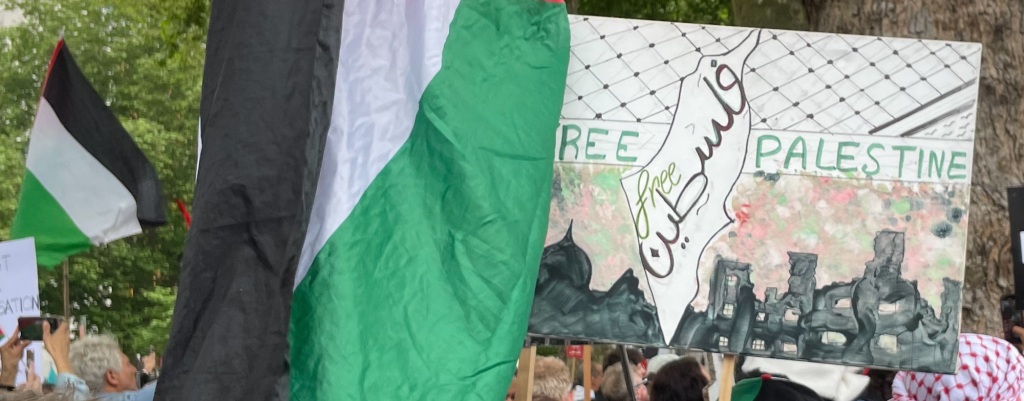

A shrine by the roadside. Each small white bundle represents a child in a shroud killed on each day since October 2023.
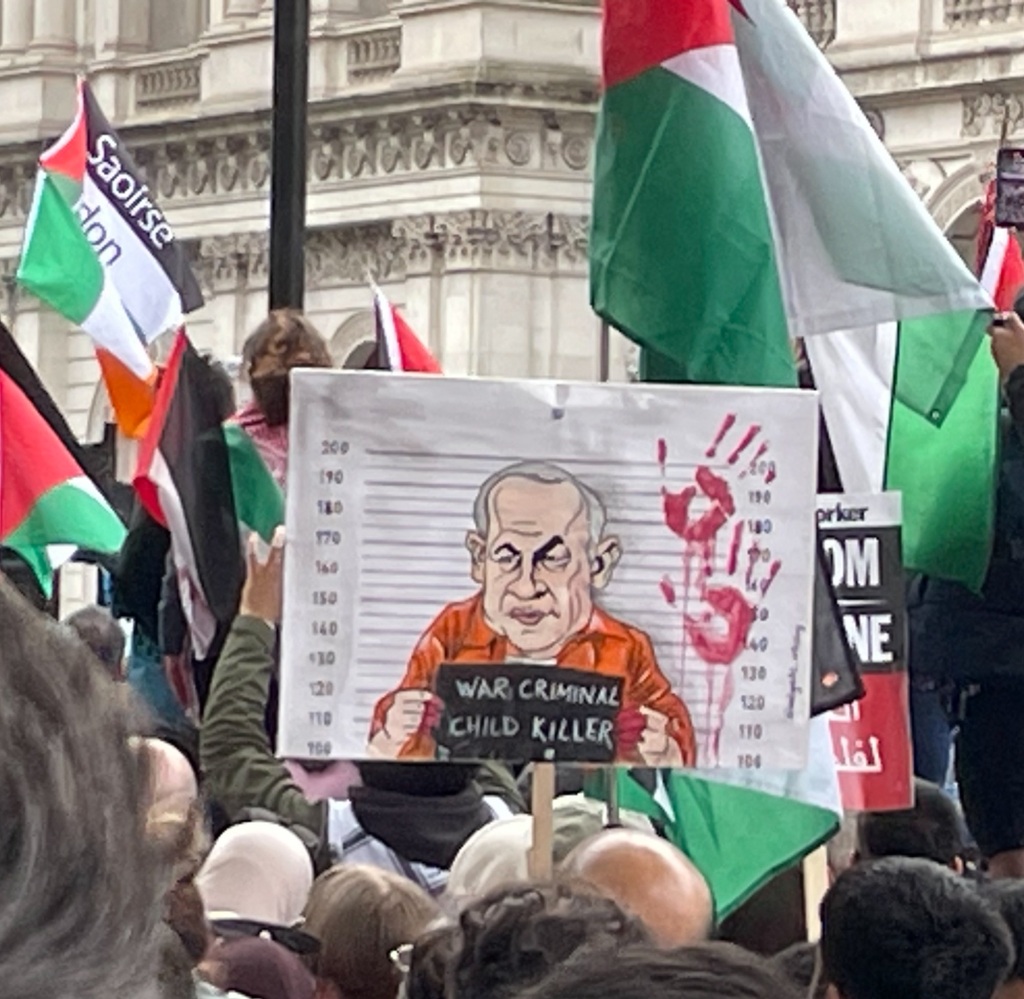
It turns out that the International Criminal Court has its sights set on arresting those who, allegedly, instigated terrible crimes.

We passed a counter protest of a few dozen far right extremists. One of their banners is included here for comic effect.

